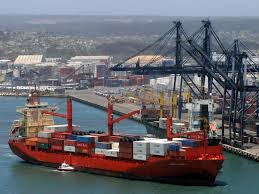How does the Port of San Antonio manage waste?

How does the Port of San Antonio manage waste?
How does the Port of San Antonio manage waste? Effective waste management is a critical aspect of operations at the Port of San Antonio.
As a major hub for maritime activities, the port recognizes its responsibility to minimize environmental impact.
Here’s an overview of how the Port of San Antonio manages waste efficiently and sustainably.
Waste Segregation Practices
The port implements waste segregation practices to differentiate between various types of waste.
This includes separating hazardous waste from non-hazardous materials, recyclables, and organic waste.
Proper segregation ensures that each waste type is handled according to specific regulations.
This practice minimizes the risk of contamination and enhances recycling efforts.

Recycling Initiatives
Recycling is a key component of the port’s waste management strategy.
The port has established partnerships with recycling companies to process recyclable materials.
This includes paper, plastics, metals, and electronic waste generated by port operations.
By promoting recycling, the port reduces landfill contributions and conserves natural resources.
Hazardous Waste Management
Special protocols are in place for the safe handling and disposal of hazardous waste.
This includes chemicals, oils, and other materials that require careful management.
The port complies with national and international regulations for hazardous waste disposal.
Proper management minimizes environmental risks and ensures compliance with legal standards.
Waste Reduction Programs
The Port of San Antonio actively promotes waste reduction initiatives among its stakeholders.
These programs encourage shipping companies and terminal operators to minimize waste generation.
Awareness campaigns focus on best practices for reducing packaging and improving efficiency.
By fostering a culture of waste reduction, the port aims to achieve long-term sustainability goals.
Training and Education
Training programs are provided for port staff and operators to enhance waste management practices.
Employees receive education on proper waste segregation, recycling, and hazardous waste handling.
This training ensures that everyone is equipped to contribute to effective waste management.
Educated personnel are vital for maintaining compliance and promoting environmentally friendly practices.
Monitoring and Reporting
The port continuously monitors waste management practices to ensure effectiveness.
Regular audits assess waste generation, recycling rates, and compliance with regulations.
This data helps identify areas for improvement and track progress over time.
Transparent reporting on waste management initiatives enhances accountability and community trust.
Collaboration with Local Authorities
The Port of San Antonio collaborates with local environmental agencies and authorities.
This partnership ensures that waste management practices align with community standards and regulations.
Collaborating with local agencies helps in the development of comprehensive waste management strategies.
Engaging with the community fosters support for the port’s sustainability efforts.
Innovative Technologies
The port is exploring innovative technologies to improve waste management efficiency.
This includes automated waste sorting systems and data analytics for monitoring waste flows.
Utilizing technology enhances the ability to track and manage waste effectively.
Continuous improvement in waste management practices is essential for meeting sustainability targets.
The Port of San Antonio
The Port of San Antonio demonstrates a strong commitment to responsible waste management practices.
Through waste segregation, recycling initiatives, and hazardous waste protocols, the port minimizes its environmental impact.
Training, monitoring, and collaboration with local authorities further enhance its waste management efforts.
As the port continues to innovate, it aims to set a benchmark for sustainability in the maritime industry!





Leave a Reply